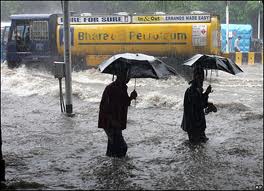Early inhabitants along the Pacific coast observe a striking pattern in weather conditions that create unusual side-effects: too much heat or too much rain. The condition that creates a very dry weather along the east of the Pacific is called La Niña. The concept behind the name comes from the marked disparity on the effects of La Niña and El Niño. It means “the little girl” in Spanish, the female counterpart of El Niño. As the name implies, the effects are the exact opposite of the other. Trade winds in the lower layer of the atmosphere and the upwelling of the cool waters beneath the ocean are the key factors in this La Niña phenomenon. Usually, they follow a relatively fixed cycle, trade winds blowing east along the Pacific from a low altitude moving up and going back to where it started. The thermocline of warm and cool waters causes uneven surface temperature along the Pacific. Consequently, air pressure on the warm side is much lower compared to the other which has higher pressure thus maintaining the cycle.
Sometimes the upwelling of cool waters beneath the surface becomes too great producing more wind velocity to the trade winds and pushing the low pressure areas even farther. This results in small to zero rainfall to the east of the Pacific (eastern seaboard) while heavy rainfall in Australia and Asia.
Severe dry conditions of La Niña causes poor harvest on land but is compensated by a much better harvest on fish due to the upwelling of cool waters which is much favorable to marine life. On the other hand, countries to the west of the Pacific (Asian and Australian countries) experience the worst possible conditions. Aside from too much rain which is unfavorable for farming, the surface temperature is also too warm to for fishes to inhabit. Hence, the effect on the livelihood is twofold.
El Niño and La Niña are just two sides of the same coin. The transition from every phase happens due to the oscillation of the thermocline and the consequent movement of the trade winds. As the trade winds pick up speed, due to high pressure, La Niña comes in and when the warm water sloshes out above the cold waters, the wind movement stops or reverses El Niño phenomenon occurs.



Hi and thanks for a spectacular article. I seriously like the blog and thought that I might tell you! 😀 Thanks a lot, Thanks a lot